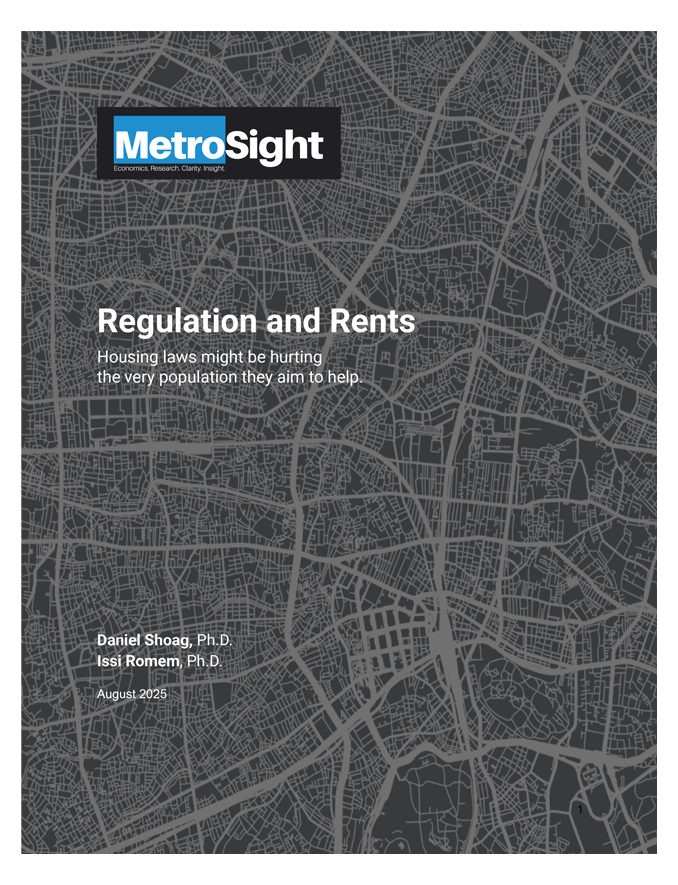A follow-up to our February 2025 “Behind the High Cost of Rent” report
Local rules intended to protect renters may be increasing the very costs they aim to control. Regulation and Rents—authored by Daniel Shoag, Ph.D. and Issi Romem, Ph.D. and sponsored by NMHC and the National Apartment Association (NAA)—examines how four categories of regulation affect rents across U.S. metro areas. Using CoStar market data (2000–2024) and U.S. Census American Community Survey data (2005–2023), the study finds that several popular policies are associated with higher rents, with the largest effects on lower-income renters and residents of 2–4 unit properties.
Key Findings
- Source-of-income laws are associated with rent increases of about $1,104 annually according to CoStar data and $876 annually based on ACS data.
- Eviction laws correspond to increases of $1,224 annually in CoStar data and $1,092 annually in ACS.
- Screening laws are linked to increases of $708 annually in CoStar Data and $252 annually in ACS.
These rent increases had disproportionate effects by income and property size.
- Lower-income renters experienced greater rent increases across all three categories of housing provider-resident ordinances.
- Residents of properties with two, three and four units consistently faced the largest rent increases.
Staff Resource
Study Authors
- Daniel Shoag, Ph.D.
- Issi Romem, Ph.D.




